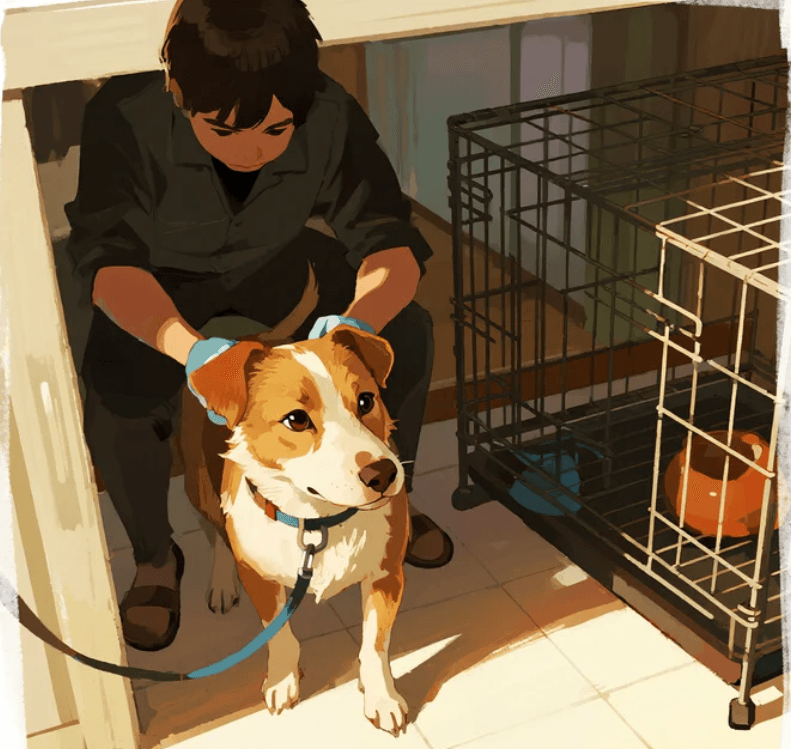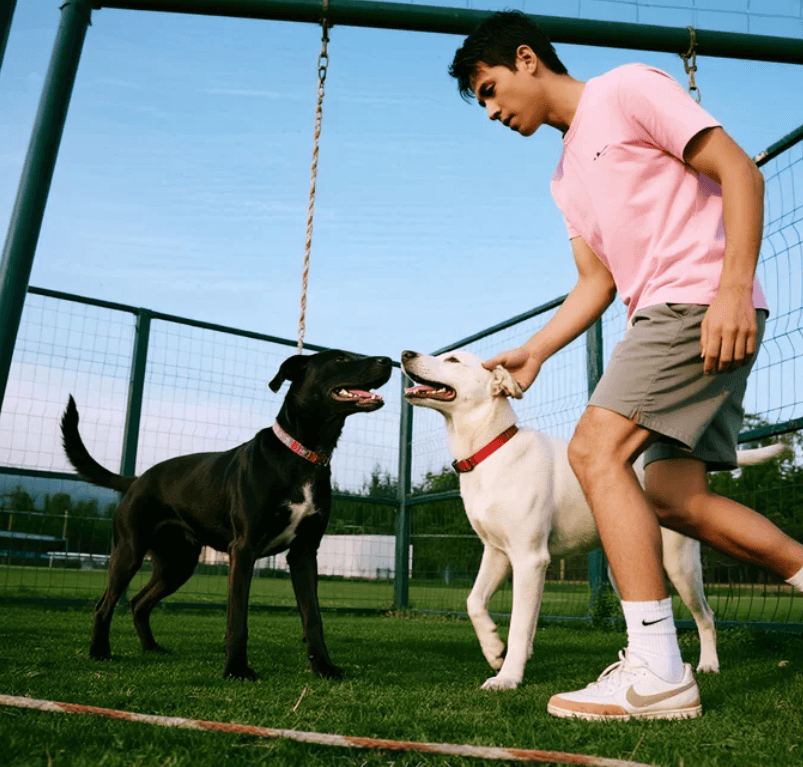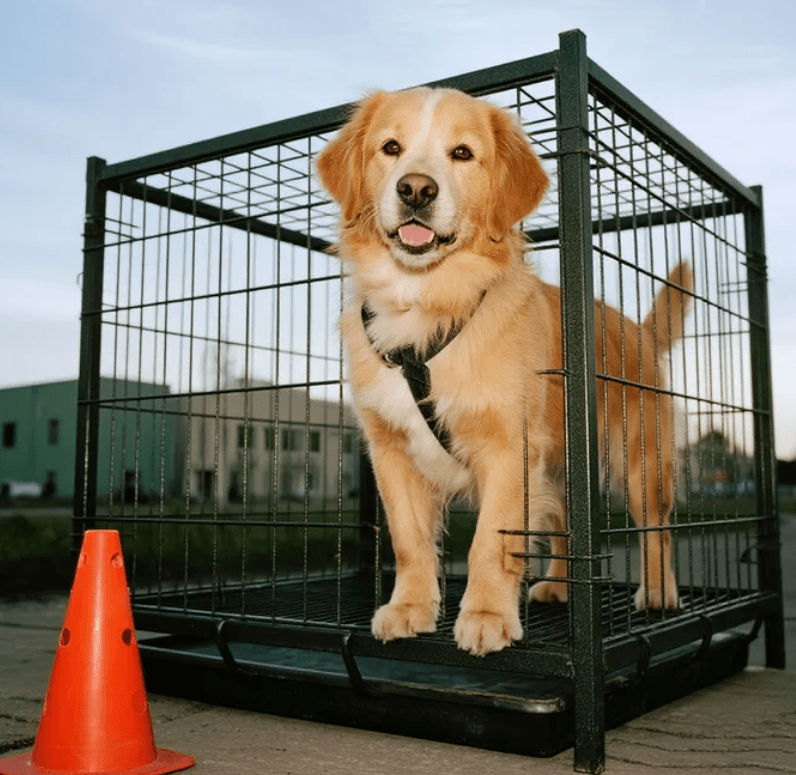How Long to Crate Train a Dog: Complete Timeline & Tips by Age and Personality

How Long Does Crate Training a Dog Really Take?
Crate training is one of the most effective ways to create structure, security, and trust between a dog and their human companion.
Whether you're training a rambunctious puppy or a shy rescue, you’ve probably asked yourself, “How long does it take to crate train a dog?” The answer depends on several factors: age, breed, past experiences, and consistency.
In this comprehensive guide, we’ll break down crate training timelines and give you tips to make the process smoother and faster.
Understanding Crate Training: What Is It and Why Is It Important?
Crate training involves teaching a dog to feel comfortable in a crate — a secure, enclosed space that functions like a personal den.
Crates aren’t meant to punish or isolate your dog, but rather to offer safety, help with potty training, reduce destructive behavior, and ease anxiety.
Benefits of crate training include:
- Potty training support: Dogs naturally avoid soiling their sleeping area.
- Safety: Prevents puppies or new dogs from chewing dangerous objects when unsupervised.
- Travel preparation: Crate-trained dogs handle travel, vet visits, or boarding better.
- Routine and rest: Crates offer dogs a quiet, cozy space to rest undisturbed.
Average Time to Crate Train a Dog: General Timeline
The average dog takes anywhere from 2 weeks to 3 months to become fully comfortable with a crate.
However, this is just a guideline. Some dogs pick it up in days, while others may take several months. The key factors influencing this are:
- Dog’s age (puppy, adult, or senior)
- Previous experience with crates
- Personality (confident vs. anxious)
- Consistency and patience from the owner
Crate Training Timeline by Dog’s Age
1. Crate Training Puppies (8 weeks to 6 months)
Puppies are the easiest to crate train because they haven’t developed long-standing habits. That said, they have shorter attention spans and less bladder control. A general timeline might look like:
- Week 1: Introduction to the crate, feeding inside, door open.
- Week 2–3: Begin closing the door for short intervals.
- Week 4–6: Comfortable with short absences and overnight crating.
Most puppies can be crate trained for daytime naps and nighttime sleeping within 4–6 weeks with consistency.
2. Crate Training Adult Dogs (6 months to 7 years)
Adult dogs can be easier or harder depending on their previous exposure to crates. With no prior experience, expect:
- Week 1–2: Introduce crate gradually, reward entry, keep the door open.
- Week 3–4: Short sessions with the door closed, build duration.
- Week 5–8: Comfortable staying in crate for 2–4 hours, possibly overnight.
With daily training and positive reinforcement, many adult dogs adjust well within 1–2 months.
3. Crate Training Older Dogs (7+ years)
Senior dogs may take longer due to established habits or medical issues. If crate training a senior:
- Week 1–3: Introduction and desensitization only — avoid closing the door at first.
- Week 4–6: Slowly build tolerance for short intervals with door closed.
- Week 6–10+: Full comfort in crate may take up to 2–3 months.
Older dogs often need more gentle transitions and accommodations like orthopedic bedding and easy crate access.
Factors That Affect Crate Training Duration
1. Temperament and Personality
Confident, food-motivated dogs generally learn faster. Anxious or independent dogs may take longer to accept confinement and need slower, more careful steps.
2. Past Experiences
Rescue dogs or shelter dogs may have negative crate associations. These dogs might take extra weeks or even months of careful work to feel safe in a crate.
3. Breed Tendencies
Some breeds are naturally more adaptable. For instance:
- Fast learners: Labradors, Golden Retrievers, Poodles
- Stubborn learners: Huskies, Beagles, Terriers
4. Training Consistency
If crate training is irregular or inconsistent, progress will slow significantly. Sticking to a daily routine accelerates results.
5. Crate Setup and Environment
A crate that's too small, too hard, too hot, or placed in a stressful location can delay training. Use soft bedding, toys, and choose a quiet, well-lit area of the house.
How to Speed Up Crate Training
Here are expert tips to make crate training faster and more effective:
- Use high-value treats: Make the crate rewarding with treats or stuffed KONG toys.
- Feed meals in the crate: Build a positive association with daily routines.
- Practice short, frequent sessions: Multiple short sessions are better than one long one.
- Keep exits calm: Never let your dog out while they’re whining — wait for a pause.
- Crate when calm: Crating a tired dog after a walk or play session is easier than trying with high energy.
Warning Signs to Slow Down the Training
If your dog shows signs of fear or discomfort, you may be moving too fast. Look for:
- Whining or barking in the crate
- Pacing or trying to escape
- Excessive drooling or panting
- Soiling inside the crate
If any of these occur, go back to basics: leave the door open, reduce crate time, and rebuild comfort at a slower pace.
Should Crate Training Be Used Overnight?
Yes — crate training can and should include overnight crating, especially for puppies or new rescues. Just be mindful of age-related needs:
- Puppies (under 4 months): May need a potty break every 3–4 hours overnight.
- Adult dogs: Can typically sleep 6–8 hours without needing a break.
- Seniors: May require 1–2 breaks depending on bladder control.
When Is Crate Training Complete?
Your dog is considered fully crate trained when:
- They enter the crate willingly on command.
- They remain relaxed with the door closed for extended periods.
- They do not bark or whine excessively while inside.
- They sleep overnight in the crate without accidents or anxiety.
Even after training is “complete,” maintain occasional use of the crate so your dog continues seeing it as a positive space.
What If Crate Training Doesn’t Work?
While most dogs can be crate trained, some simply don’t respond well to confinement. Alternatives include:
- Exercise pens: Offer more room but still provide boundaries.
- Gated rooms: Use baby gates to limit access without full crating.
- Dog-safe rooms: Set up a low-risk area with bed, water, and toys.
Always prioritize your dog’s emotional and physical well-being. Crate training is a tool, not a requirement.
Conclusion: Be Patient — Crate Training Takes Time
So, how long does it take to crate train a dog? It depends — but whether it’s 2 weeks or 2 months, your effort pays off in the form of a more secure, well-adjusted dog.
Stay consistent, be gentle, and celebrate small wins. Remember, crate training isn’t just about rules, it’s about giving your dog a safe space they can truly call their own.
FAQs About Crate Training Duration
Q: Can I crate train my dog in one week?
A: Some puppies or well-adjusted adults may adapt in a week, but most dogs require 2–6 weeks of consistent training.
Q: Is it okay to crate train an older dog?
A: Absolutely. Older dogs can learn to love the crate with slow, patient steps and proper support.
Q: How many hours per day should I crate my dog?
A: Puppies: 2–3 hours max at a time. Adults: 4–6 hours during the day, up to 8 at night. Always provide breaks and exercise.
Q: My dog still hates the crate after a month — what now?
A: Reassess your approach. Consider starting over with positive associations, or consult a trainer or behaviorist if needed.
 Related Articles
Related Articles





